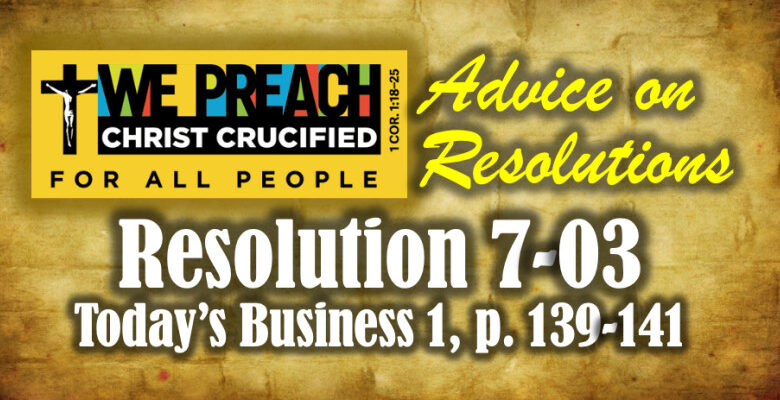Pastoral Delegate Michael Dorn presented a good idea about how to help get both sides together in the CTX/Synod struggle. You can find his “Substitute Motion” on pages 395-396 in Today’s Business Issue 3 (Monday).
How Does a Substitute Motion “Work”?
The LCMS use of a substitute motion is simple and is outlined in Special Standing Rules #20 on Page 16 of Today’s Business Issue One.
When a substitute motion is offered, delegates will have to determine if they even want to consider it. If they do and pass the substitute motion, the original motion dies and cannot be brought up again. However, if the substitute motion fails to be adopted, the original motion comes back to the floor.
Why is this important? If a delegate like Pastor Dorn comes up with a good solution to a problem we have, delegates may consider his or her option. If delegates determine it is a better idea than the original resolution and pass it, good! If the delegates don’t believe it is a better response, they can defeat the substitute motion and go back to the first.
Two good options! Proverbs 15:22 in action: “Plans go wrong for lack of advice; many advisers bring success” (NLT)!!
Delegates will only be blessed to consider this substitute motion. The two parties directly involved have failed to utilize our normal process of dispute resolution (see lines 36-39, Page 395). Texas DP Mike Newman makes clear there are many misunderstandings on both sides (https://txlcms.org/wp-content/uploads/2023/07/Observations-and-RecommendationsCTXPrelimReport-1.pdf) The legal complexities limiting CTX and Synod may keep them from moving forward without outside intervention.
Let’s help both sides come back to the table with the help of an outside.
If we fail to do this, Concordia Texas will be lost to Synod. If Synod brings a lawsuit and is somehow able to “win,” what will it mean for Synod to possess buildings but not the University and its supporters?

